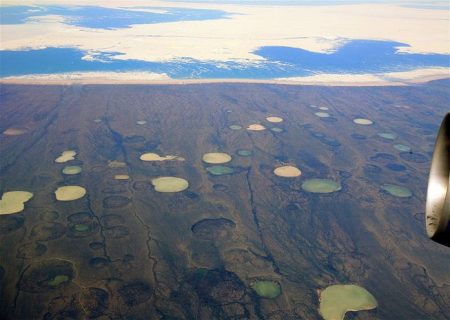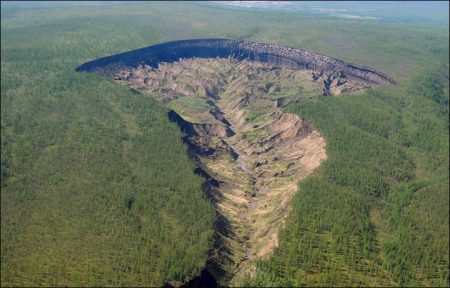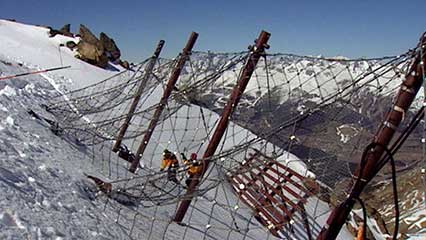March 5, 2017 – An area almost 135,000 square kilometers (52,000 square miles) in Canada’s Northwest Territories is showing significant permafrost melt. The area in question is part of a larger study looking at changing conditions for 1.3 million square kilometers (a half million square miles) of the Canadian Arctic.
The study which appears in the February issue of the journal, Geology, notes a “recent intensification of thaw slumping across northwestern Canada” which has triggered “a cascade of fluvial, lacustrine, and coastal effects…..thaw slumps and patterns of fluvial sediment mobilization.” What the researchers conclude is that this signals a “climate-driven renewal of deglaciation and postglacial permafrost landscape evolution.”

What the study didn’t look at is the release of greenhouse gasses (GHGs) from the thawing permafrost. It is this issue that makes the permafrost a dangerous climate change time bomb. Scientists believe that the wetlands of the Northwest Territories, Siberia, and Alaska contain twice the carbon currently in the atmosphere. At present, carbon dioxide (CO2) levels in the atmosphere are over 400 parts per million (ppm). Does that mean the discharge of trapped GHGs in melting permafrost could increase atmospheric CO2 levels to 800 ppm? CO2 is not the only GHG the permafrost will release. Methane (CH4) represents a more immediate threat.
Head scientist, Steven V. Kokelj, for the study states, “things have really taken off. Climate warming is now making that happen. It’s exactly what we should expect with climate change.” Similar studies in Siberia by University of Sussex scientists have documented large-scale permafrost slumps including one where the ground created an enormous sinkhole. An even larger “megaslump” was recently described in the journal, Quaternary Research, describing an area of permafrost 80 meters (over 260 feet) deep and more than 800 meters (2,600 feet) wide at its greatest extent.

So far much of the carbon released from the melting in Canada is trapped in coarse soil particles and not the atmosphere. But in a separate Swedish study of the same occurrences in Siberia, the sediments are getting washed into coastal waters where the CO2 is contributing to warmer oceans with lower pH levels.
Widespread permafrost melting is not just upsetting the balance of carbon in the atmosphere, soil, and water, it is also impacting human communities in the North dependent on wildlife for food. Lake trout, caribou, and other traditional food sources are under stress.
Alpine permafrost is also experiencing similar destabilization. Researchers at the Austrian Bureau of Meteorology and Geodynamics, note in a recent study that the number of ice days in the European Alps has declined by 21 over May and June. The decline has been so significant that the research station headquarters for the study ended up crumbling when the land underneath it melted and subsided. Melting permafrost in the Alps is not just a carbon release threat, but also a potential infrastructure disruptor. Satellite images show destabilized slopes, increasing frequency of landslides, and growing damage to roads, power lines, and water courses.









